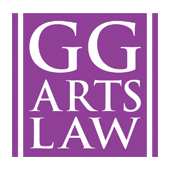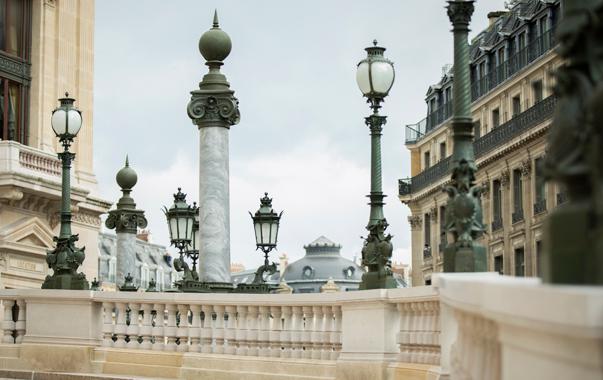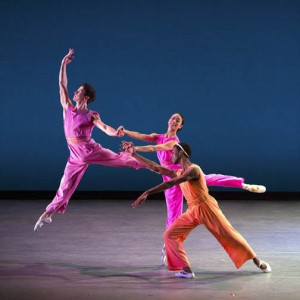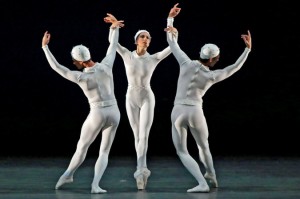By Brian Taylor Goldstein, Esq.
I realize there are other equally important issues out there than visas and international touring. However, in the wake of the recent terrorist attack in California, and as U.S. politicians and political candidates roll out a “Keep the Hate Alive” campaign, we are constantly receiving alarming updates from clients as well as from the American Immigration Lawyers Association of artists encountering new obstacles and challenges. Here are the latest changes and challenges you need to be aware of:
1. A Visa Cannot Be Valid Beyond The Dates In The Approved Visa Petition
When a visa petition is approved by USCIS, it is approved for a specific classification period. When an artist then goes to a U.S. Consulate to apply for her or her visa, the visa issued is supposed to reflect the classification period of the approved petition. For example, if a violinist is approved for an O-1 classification period of August 1, 2015 to July 31, 2016, then the O-1 visa stamped into her passport should reflect an expiration date of July 31, 2016. If you examine an O or P visa, you will most often see the letters “PED” followed by a date. “PED” refers to the “Petition Expiration Date.” The PED date “should” coincide with the expiration date of the visa itself.
Unfortunately, some U.S. Consulates have erroneously been issuing O-1 visas that expire beyond the classification period of the approved petition—in some cases, O-1 visas have been issued for with a validity period of up to five years in the future! If this happens, your artist has not won the immigration jackpot! Under U.S. law, the maximum validity period of an O-1 visa for an artist cannot exceed three years. Moreover, it cannot exceed the classification period of the approved petition.
Recently, a prominent artist was turned away because she attempted to enter the U.S. under just such circumstances. A visa petition had been filed for her in 2014 and the petition was approved for an O-1 classification period of 8 months. However, the U.S. Consulate issued her an O-1 visa that did not expire until 2019. She and her management reasonably presumed that this meant she was free to use her O-1 visa until 2019 and no further visa petitions were required. Indeed, until recently, she had been entering the U.S. on the visa ever since 2014 without any trouble. Her past entries were the result of luck and inadvertence on the part of U.S. Immigration Officers at the port of entry. This will no longer be the case. All U.S. Immigration Officers will be scrutinizing all visas far more closely.
When USCIS approves a visa petition, it issues an I-797 Approval Notice with the specific dates of the approved visa classification period. If you or your artist ever receives a visa from a U.S. Consulate that expires beyond the dates of the classification period or beyond the PED date on the visa, ignore all dates beyond the PED date! Assume the visa expires on the PED date and do not use it for any work or travel beyond that date.
(For those of you who are actually interested in legal minutiae, there ARE, in fact, legitimate categories of 5 year O and P visas—they just don’t apply to artist categories. This is why the consulates can get easily confused.)
2. All Artists Should Travel With A Copy of Their I-797 Petition Approval Notice
Another artist was recently detained at a U.S. airport for attempting to enter the U.S. on an erroneous “5-year O-1 visa.” Ultimately, he was permitted to enter only because he happened to have a copy of his I-797 O-1 Petition Approval Notice indicating that his upcoming U.S. engagement was within the approved classification period. However, he was reminded not to travel on his O-1 visa after the expiration date of the classification period.
Earlier this week, an artist was actually refused entry on his P visa because a U.S. Immigration Officer claimed that he needed to have a copy of his I-797 approval notice. The U.S. Immigration Officer was wrong. The artist had to fly home and be booked on a return flight to the U.S. the next day. Aggravatingly, but not surprisingly, when the artist flew back to the U.S. the next day with a copy of his approval notice, the U.S. Immigration Officer on that occasion didn’t even ask for a copy of the approval notice and the artist was admitted without any questions.
Also this week, a Canadian artist arrived in the U.S. with a copy of her I-797 approval notice (which is all that is required for Canadians) and was refused entry because the U.S. Immigration Officer claimed that she needed to have the original I-797 approval notice. The U.S. Immigration Officer was wrong on this occasion as well. Fortunately, a supervising officer was able to step in and resolve the matter so that the artist was ultimately able to enter.
Except for Canadians, artists and others are not required to travel with a copy of their I-797 petition approval notices—much less the original I-797 approval notice itself. Nonetheless, given that U.S. Immigration Officers have been placed on high alert (without always knowing exactly what they are looking for), we are recommending that all artists travel with a copy of their I-797 approval notice. Should any artist be asked for an “original” approval notice, he or she should calmly and politely ask to speak with a supervising immigration officer. More often than not, the supervising officers are better trained than the officers assigned to the inspection desks.
3. Changes To The ESTA/Visa Waiver Program
Congress is in the process of adding additional restrictions to the Visa Waiver Program—the program which permits citizens of 38 countries to travel to the United States for business or tourism for stays of up to 90 days without a visa. This is often erroneously referred to as an “ESTA visa.” The term “ESTA” stands for “Electronic System For Travel Authorization” and is merely the registration process through which an individual indicates their intent to enter the U.S. without a visa. It is not a visa. This is important because artists are required to have a visa whenever they enter the U.S. to perform—even if they perform for free; even if no tickets are sold; even if they are performing for a non-profit; even if they are performing for a festival; or even if they are performing for a college or university. In short, performers can never enter the U.S. to “perform” under the Visa Waiver Program.
While most of the propose changes to the Visa Waiver Program should not have any impact on artists (unless the artist is from or has ever travelled to certain counties in the past 5 years), United States Customs and Border Patrol has already begun significantly seeking out artists who may be registering for ESTA and attempting to enter the U.S. on the visa waiver program with the intention of performing. We are getting almost daily reports of artists being stopped, refused entry, and having their ESTA/Visa Waiver privileges revoked for life!
I cannot emphasize this enough: any artist who attempts to enter the U.S. under the Visa Waiver Program for any purposes that involves actually performing does so at his or her own peril!
The only limited exceptions—and they are very narrowly construed—are competitions, auditions (including non-public showcases at arts conferences) and speaking (but not performing) at a college or university.
4. There Continue To Be Significant Delays In Processing Visa Petitions
USCIS is presently taking a minimum of 8 – 10 weeks to process visa petitions at both the Vermont and California Service Centers and there appears to be no end in sight to these delays. This means that, as of today, if you need to have an artist enter the U.S. any earlier than March 2016, you need to pay the additional $1225 for premium processing. (The official visa processing times that USCIS posts on its website have always been purely propaganda and should always be disregarded as such.)
On the bright side, dealing with international touring at the moment makes all those other topics we write about–cancellations, copyright infringement, taxes, commission disputes–a little less daunting.
__________________________________________________________________
For additional information and resources on this and other legal, project management, and business issues for the performing arts, visit ggartslaw.com
legal, project management, and business issues for the performing arts, visit ggartslaw.com
To ask your own question, write to lawanddisorder@musicalamerica.com
All questions on any topic related to legal, management, and business issues will be welcome. However, please post only general questions or hypotheticals. GG Arts Law reserves the right to alter, edit or, amend questions to focus on specific issues or to avoid names, circumstances, or any information that could be used to identify or embarrass a specific individual or organization. All questions will be posted anonymously and/or posthumously.
__________________________________________________________________
THE OFFICIAL DISCLAIMER:
THIS IS NOT LEGAL ADVICE!
The purpose of this blog is to provide general advice and guidance, not legal advice. Please consult with an attorney familiar with your specific circumstances, facts, challenges, medications, psychiatric disorders, past-lives, karmic debt, and anything else that may impact your situation before drawing any conclusions, deciding upon a course of action, sending a nasty email, filing a lawsuit, or doing anything rash!







Maestro, 62, Outruns Players
November 22nd, 2015By ANDREW POWELL
Published: November 22, 2015
MUNICH — At five o’clock last Sunday afternoon, Munich time, three Mariinsky Orchestras began to play. Two of them launched into Pikovaya dama and Die Zauberflöte at the Mariinsky complex in St Petersburg. The third, here at the Gasteig, opened the accompaniment to a witty Shchedrin vocalise. Such are the possibilities with a roster of 335 musicians, the world’s largest. At the concert, though, the Mariinsky name was bizarrely buried. “MPhil 360°,” screamed the program book cover, “das Festival der Münchner Philharmoniker,” nowhere mentioning the Russian orchestra. The missing credit no doubt mattered less to Valery Gergiev, who now helms both orchestras (or all four, depending on how you count), than the furthering of his new goals: to better relate the Munich Philharmonic to citizens of all walks of life and to programmatically “bridge … German and Russian orchestra culture.” And in this the first MPhil 360° went far, as a lobby- and hall-based three-day jamboree with interviews and attractively priced music in varied formats. Indeed Gergiev himself went far, conducting as festival climax on Sunday five hour-long, off-subscription concerts centered on the Prokofiev piano concertos. Nine hands of Herbert Schuch, Denis Matsuev, Behzod Abduraimov (pictured), Alexei Volodin and Olli Mustonen partnered him at 11, 1, 3, 5 and 7 o’clock, respectively, while scores by Haydn, Mozart, Weber, Reger, the Munich composers Hartmann and Widmann, besides the Munich-based Shchedrin, offered mostly pertinent, mostly Germanic counterforce.
Fortunately for the MPhil’s amenable Intendant, Paul Müller, the extravagant project, at least Sunday’s marathon part of it, proved a logistical and artistic success, even if attendance hovered at 50% of the Gasteig’s capacity. It may or may not have been smart to let the Russians do 60% of the work — assigning them the first two concerts in addition to the five o’clock and leaving less than two hours of music to the day’s titular heroes — but orchestral standards held up throughout as numerous manned Medici TV cameras rolled. As if conducting 300 minutes of music was not enough, Gergiev amiably stood through solo encores and was available for interview during the intermissions. Not incidentally, he dedicated all the concerts to victims of the Islamist murders in Paris.
Hearing five pianists emphasized the disparity of the concertos. The scoring of the compact D-flat-Major work (1912) favors the orchestra, which was dazzlingly unchecked in this performance so that Schuch’s fleet playing could not consistently be heard. Volodin’s sparkle and linear integrity in the left-hand Fourth Concerto (1931) could not overcome the perception, in context, of a drop in creativity in the writing; the pianist more fully advertised himself with a blistering account of the Precipitato from Prokofiev’s Sonata No. 7. Mustonen presented the first three movements of the madly insistent Fifth Concerto (1932) as a unit, with its Toccata a backstop on essentially percussive ideas. But he attempted a round open sound for many figures, quite divergent from, say, Ciani or Béroff. His Larghetto and Vivo offered unforced contrast.
The concertos from 1921 and 1923 fared best. Although Abduraimov’s light touch demanded cupped hands to the ears, he breezed fluently through Concerto No. 3, finding playfulness in its angularity, nonchalance in its lyricism. His reading had a crystalline quality underpinned by decisive, shapely phrasing in the left hand, qualities that rendered uncommon detail in the Variations. To the G-Minor Second Concerto, summit of Prokofiev’s work in this form, Matsuev brought power and evident consideration of its 32-minute arc. Robust rhythms, neatly accented quiet passages, a frame to justly billet the big cadenza, flashes of droll humor in the Intermezzo — and the pianist barely glanced at Gergiev, who took his cues where he could. As encore came Rachmaninoff’s picture etude The Sea and the Gulls, equally intense and played with command of the long line.
If support from the podium in the concertos wasn’t always sensitive, repertory choices elsewhere mostly played to Gergiev’s strengths. The day got off to an alert start with a technically fine performance of Prokofiev’s First Symphony (1917) from the Mariinsky Orchestra. Next came a real Classical symphony, Haydn’s Bear (1786), but this lacked elegance and, consequently, expressiveness. Weber’s Romanticism bookended the second concert and concerto. His Freischütz Overture (1821) benefitted from the maestro’s energy shots at vital moments; the 1841 Berlioz arrangement of his Invitation to the Dance shimmered transparently.
When the MPhil showed up at three o’clock, a closer rapport was apparent between conductor and players (versus two years ago). Reger’s harmonically alluring Vier Tondichtungen nach Böcklin (1913) showcased first the strings (in an Elgarian picture with chances for the concertmaster), then the refined winds, next the whole orchestra (in the duly macabre third tone poem, Die Toteninsel), and finally Munich’s percussion section (in an exuberant bacchanal colorfully scored).
Two hours later the Mariinsky musicians were back, still on superb form, for that vocalise, the episodic and folksy Tanya-Katya (2002) with creamy-toned lyric soprano Pelageya Kurennaya; Hartmann’s Suite from Simplicius Simplicissimus, assembled in 1957 from the revised version of his 1935 opera, in a lively, at times jazzy mix of styles relished especially by the principal trombone; the concerto with Volodin; and, wrapping up a long haul for them, Naughty Limericks, the gaudy 1963 Shchedrin piece, which poorly followed the Prokofiev but was loudly applauded in the presence of the elderly composer, a friend of Gergiev’s. The MPhil’s second concert began with Jörg Widmann’s raucous concert overture Con brio (2008), again unhelpfully programmed with Prokofiev. The composer-clarinetist then played, or rather milked, Mozart’s A-Major Concerto, K622, jumping about the stage like an excited six-year-old, before Mustonen walked on to conclude this engrossing, unrepeatable venture.
Photo © Andrea Huber
Related posts:
Salzburg Coda
Stravinsky On Autopilot
Manon, Let’s Go
Gergiev Undissuaded
Time for Schwetzingen
Tags: Alexei Volodin, Aufforderung zum Tanz, Behzod Abduraimov, Commentary, Denis Matsuev, Gasteig, Hartmann, Haydn, Herbert Schuch, Jörg Widmann, Mariinsky Orchestra, Mariinsky Theater, München, Münchner Philharmoniker, Munich, Munich Philharmonic, Naughty Limericks, Olli Mustonen, Pelageya Kurennaya, Prokofiev, Rachmaninoff, Reger, Review, Shchedrin, Valery Gergiev, Vier Tondichtungen nach Böcklin, Weber, Wolfgang Amadeus Mozart
Posted in Munich Times | Comments Closed